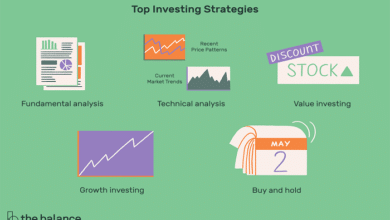Investment Vehicles: A Comprehensive Guide to Growing Your Wealth

Introduction
Investment vehicles are essential tools for anyone looking to grow their wealth and achieve financial independence. Understanding the various types of investment vehicles available can help you make informed decisions and create a diversified portfolio. This comprehensive guide will delve into the different investment vehicles, their benefits, and how to choose the right ones for your financial goals.
What are Investment Vehicles?
Investment vehicles are financial products used by investors to earn returns on their money. These vehicles can range from traditional assets like stocks and bonds to more complex instruments like mutual funds and exchange-traded funds (ETFs). Each investment vehicle has its own characteristics, risks, and potential returns, making it crucial to understand their differences and how they fit into your investment strategy.
Stocks as Investment Vehicles
Stocks are one of the most well-known investment vehicles. When you buy stocks, you purchase ownership shares in a publicly traded company. Stocks can provide high returns through capital appreciation and dividends, but they also come with higher risks. Understanding how to evaluate stocks and diversify your stock portfolio is key to using this investment vehicle effectively.
Bonds as Investment Vehicles
Bonds are another popular investment vehicle, offering more stability and lower risk compared to stocks. When you invest in bonds, you are essentially lending money to a corporation or government entity in exchange for periodic interest payments and the return of the bond’s face value at maturity. Bonds can be an excellent way to diversify your investment portfolio and reduce overall risk.
Mutual Funds as Investment Vehicles
Mutual funds pool money from multiple investors to purchase a diversified portfolio of stocks, bonds, or other securities. This investment vehicle is managed by professional fund managers, making it an attractive option for those who prefer a hands-off approach. Mutual funds offer diversification and professional management but come with management fees that can impact returns.
Exchange-Traded Funds (ETFs) as Investment Vehicles
ETFs are similar to mutual funds but trade on stock exchanges like individual stocks. This investment vehicle combines the diversification benefits of mutual funds with the flexibility of trading stocks. ETFs typically have lower fees than mutual funds and can be a cost-effective way to gain exposure to a broad range of assets.
Real Estate as an Investment Vehicle
Real estate is a tangible investment vehicle that can provide income through rental properties and capital appreciation. Investing in real estate requires significant capital and management, but it can offer stable returns and tax benefits. Real estate investment trusts (REITs) are an alternative way to invest in real estate without the need for direct property ownership.
Commodities as Investment Vehicles
Commodities such as gold, silver, oil, and agricultural products are another type of investment vehicle. Investing in commodities can provide diversification and act as a hedge against inflation. However, commodities can be volatile and require a good understanding of market dynamics to be used effectively in an investment portfolio.
Certificates of Deposit (CDs) as Investment Vehicles
Certificates of Deposit (CDs) are low-risk investment vehicles offered by banks. When you invest in a CD, you agree to leave your money with the bank for a fixed period in exchange for a guaranteed interest rate. CDs are a safe investment vehicle but typically offer lower returns compared to stocks or bonds. They are suitable for conservative investors looking to preserve capital.
Choosing the Right Investment Vehicles for Your Portfolio
Choosing the right investment vehicles depends on your financial goals, risk tolerance, and investment horizon. A well-diversified portfolio includes a mix of investment vehicles to balance risk and return. Regularly reviewing and adjusting your portfolio ensures that your investment strategy remains aligned with your goals.
The Role of Diversification in Using Investment Vehicles
Diversification is a critical principle in using investment vehicles effectively. By spreading your investments across different asset classes and sectors, you reduce the risk of significant losses. Diversification helps smooth out returns and provides a more stable investment experience, essential for long-term wealth building.
Conclusion
Investment vehicles are the building blocks of a successful investment strategy. By understanding the different types of investment vehicles and how they work, you can make informed decisions and build a diversified portfolio that aligns with your financial goals. Whether you’re investing in stocks, bonds, mutual funds, ETFs, real estate, or other assets, the key to success lies in continuous learning, disciplined investing, and regular portfolio review.
FAQs
1. What are investment vehicles?
Investment vehicles are financial products used by investors to earn returns on their money, including stocks, bonds, mutual funds, ETFs, and real estate.
2. How do I choose the right investment vehicles?
Choose investment vehicles based on your financial goals, risk tolerance, and investment horizon. Diversify your portfolio to balance risk and return.
3. What is the difference between stocks and bonds as investment vehicles?
Stocks represent ownership shares in a company and can provide high returns and dividends, while bonds are loans to corporations or governments that offer periodic interest payments and lower risk.
4. Are mutual funds and ETFs the same?
Mutual funds and ETFs both offer diversification but differ in how they are traded and managed. ETFs trade like stocks on exchanges and generally have lower fees compared to mutual funds.
5. Why is diversification important in using investment vehicles?
Diversification reduces the risk of significant losses by spreading investments across different asset classes and sectors, providing a more stable and balanced investment experience.





